 miart 2025. Photo by Nicola Gnesi Studio. APALAZZOGALLERY, Brescia, Portal
miart 2025. Photo by Nicola Gnesi Studio. APALAZZOGALLERY, Brescia, Portal Amid growing political instability and uncertainty, the need for transnational solidarity, connection, and community has never been more urgent. In this context, as part of Milan Art Week, miart 2025 offered a space for collaboration, exchange, and the fluid circulation of ideas, underscoring the power of community within the art world.
With its 29th edition titled among friends, the fair sought to position itself as a vibrant platform for solidarity, leaning into the spirit of inclusivity and shared dialogue. While maintaining its structure across three sections—Established, Emergent, and Portal—the fair embraced collaboration as both method and subject, drawing inspiration from Robert Rauschenberg's centenary and his radically inclusive approach to art-making. Directed by Nicola Ricciardi with a refreshed curatorial team, this year's edition sought to extend beyond the transactional rhythms of an art fair, positioning itself as a cultural producer in its own right. Within the expected dynamics of a commercial fair, miart 2025 presented a curatorial vision shaped by dialogue, connection, and mutual support.
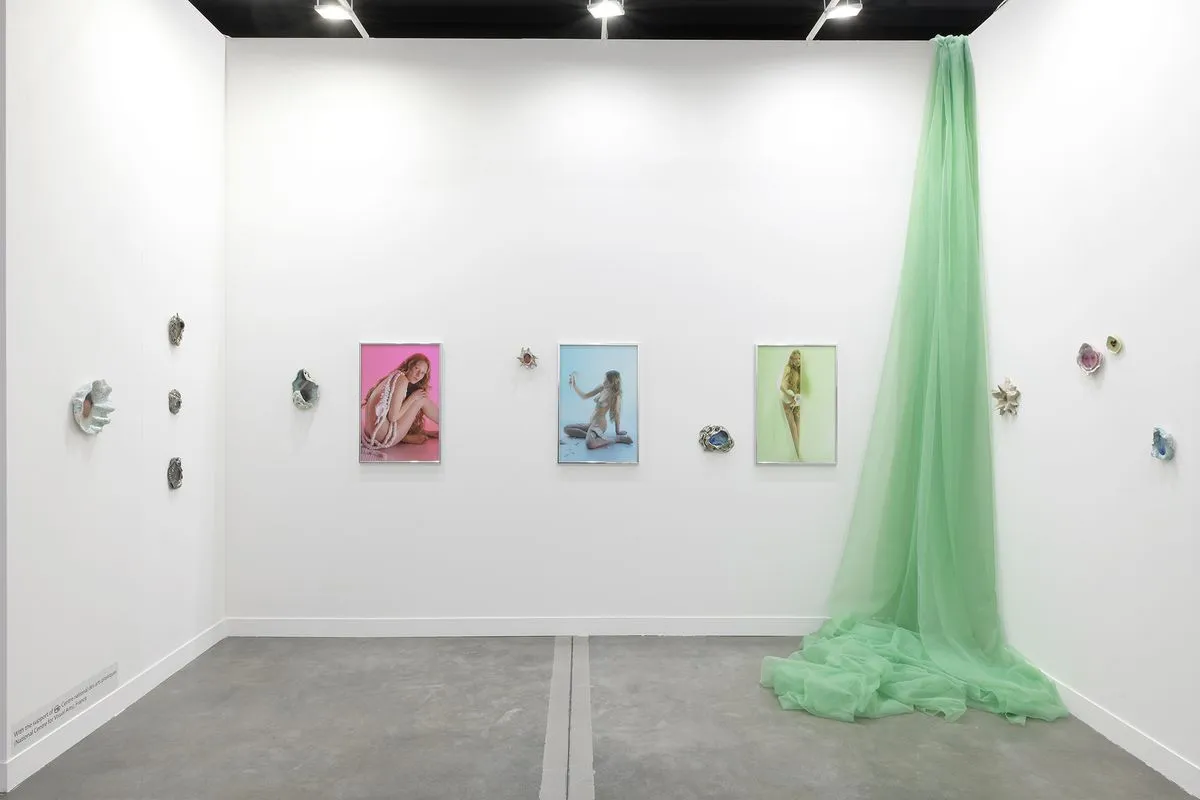
Throughout Allianz MiCo, visitors encountered curated dialogues across time, geography, and medium: solo presentations coexisted with museum-quality groupings, while new commissions and site-specific works highlighted process. The fair balanced polish with pockets of experimentation, and mainstream programming with more porous, speculative gestures, seeking to shape cultural ecosystems rather than just accommodating them.
This orientation was particularly visible in Portal, a section curated by Alessio Antoniolli, which rejected fixed cartographies in favor of fluid affiliations and counter-historical propositions. Antoniolli's curatorial vision focused on crossing boundaries, embracing multiple perspectives, and offering alternative ways of relating. He aimed to highlight how contemporary artists engage with diverse media, geographies, and temporalities, reflecting the complexity of our interconnected world. In this spirit, the section brought together artists from various backgrounds, creating a dynamic space for collaboration and dialogue. Meanwhile, in Emergent, curated by Attilia Fattori Franchini, the fair fostered new voices and daring ideas, embracing the forward-thinking spirit that continues to shape the future of art. A new generation of gallerists presented experimental practices through immersive installations, site-specific sculptures, and new works created specifically for the fair.

A striking example of the fair's emphasis on collaborative, thought-provoking dialogue is Eugster || Belgrade's booth, located in the Emergent section. Here, the works of Marko Obradović and Saša Tkačenko come together in a powerful conversation on social structures, the complexities of collective memory, and the challenges of communal living within contemporary socio-political frameworks. Tkačenko's evocative installations—blending fragments of nostalgia with traces of late-stage capitalism—gesture toward the remnants of utopian ideals. Obradović's symbolic talismans and Keyhole series, meanwhile, draw us inward, prompting reflection on the belief systems and power structures that shape us. Their presentation feels particularly timely within the current political climate of Serbia, which, amidst ongoing turmoil over the past five months, is also witnessing a resurgence of collectivity and social solidarity.
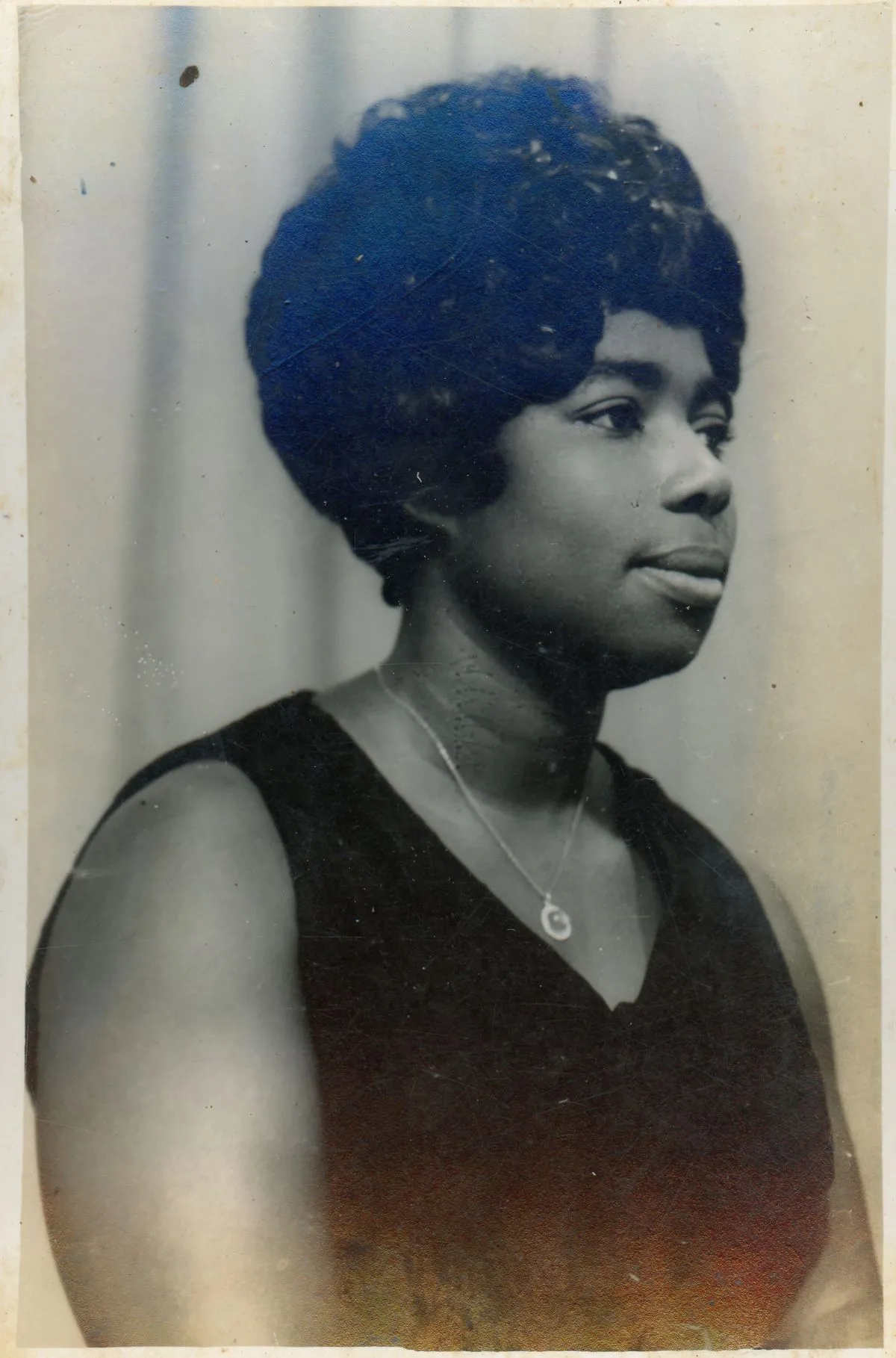

In the Portal section, APALAZZOGALLERY presents a booth curated by Kwasi Ohene-Ayeh, showcasing artists from the blaxTARLINES collective, a Ghana-based group that fosters dynamic exchanges among artists from Africa, Europe, and beyond. Established in 2003, blaxTARLINES aims to promote contemporary Ghanaian art while exploring the intersections of history, freedom, and identity. Highlighting a dynamic cross-generational dialogue, it introduces Felicia Abban, Ghana's first female professional photographer, and James Barnor, whose work documented Ghana's independence and the African diaspora, as foundational figures. Their legacies are explored alongside contemporary voices like Isshaq Ismail, who blends pop art influences and African mask aesthetics in his digital and physical works.
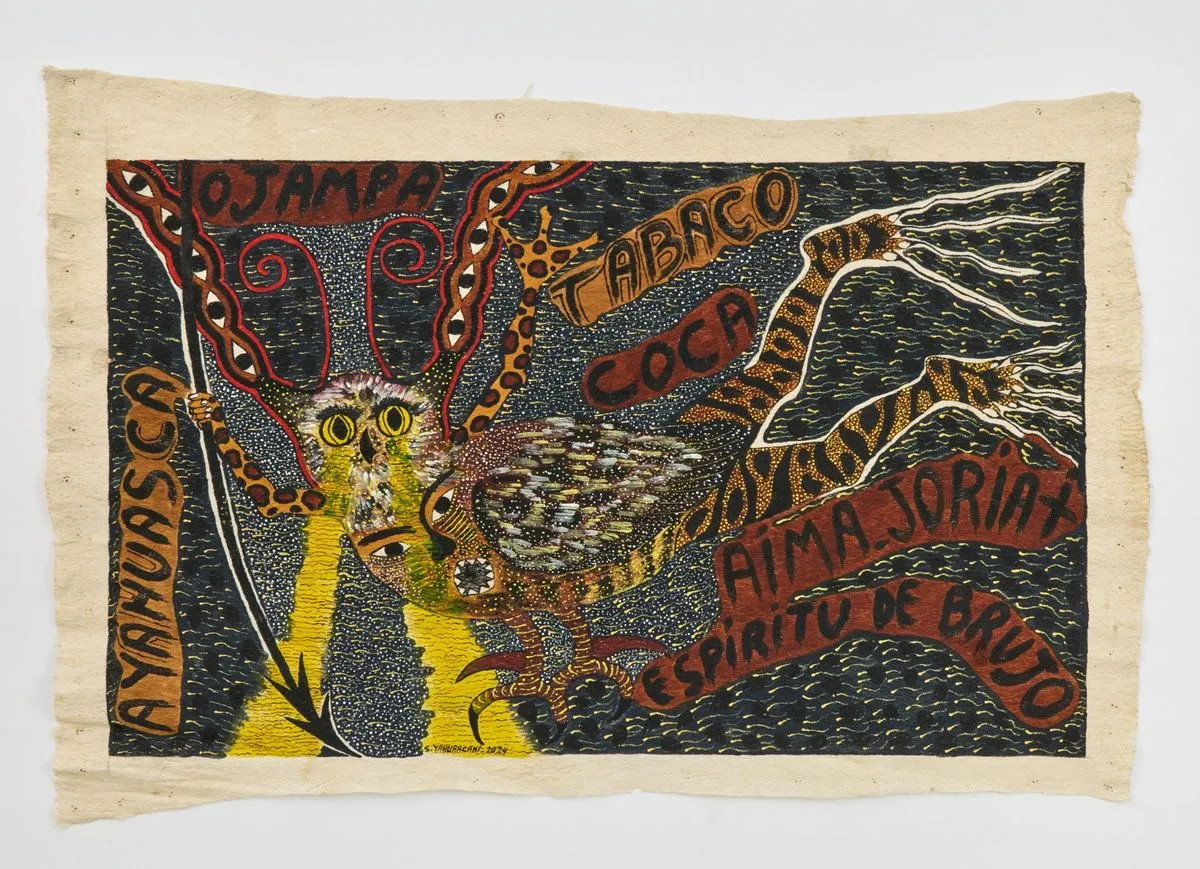

Next door, at Crisis Galería, Santiago Yahuarcani—an artist, writer, and member of the Indigenous Uitoto people from the Peruvian Amazon—presents a powerful solo booth. His work draws from ancestral cosmologies, oral histories, and environmental knowledge, using natural pigments on traditional bark cloth. Through vivid, myth-infused imagery, Yahuarcani reflects on colonial violence, cultural survival, and the fragile relationship between humans and the forest.
Colonialism is also at the centre of Cameroonian artist Victor Fotso Nyie, whose solo show at P420 titled Les présages du printemps testifies to a process of cultural healing. His clay sculptures incorporate ancestral objects, gold-leafed bricks, and rare soil, symbolizing the fragile, ongoing effort to rebuild identity, memory, and belonging. Deeply rooted in the spiritual and material culture of the diaspora, his figures evoke guardianship, protection, and the quiet resilience of tradition. Both Fotso Nyie and Yahuarcani were featured in the latest Venice Biennale.
A bit further, Coletivo Amarelo presents a rich and complex history of Brazilian identity through a dialogue between Juliana Matsumura and Flavia Regaldo. Matsumura, a Brazilian-Japanese artist, draws on her layered heritage—Japanese, Black, and Brazilian—to explore themes of ancestry, migration, and belonging. Her work references symbols such as the La Plata boat, evoking the journey of Japanese immigrants to Brazil. Regaldo, by contrast, roots her intricate metal-plate etchings in the landscapes of Minas Gerais, confronting extractivism and its entanglement with colonial legacies. Together, their practices reflect distinct yet converging inquiries into land, memory, and the multiplicity of Brazilian identity.
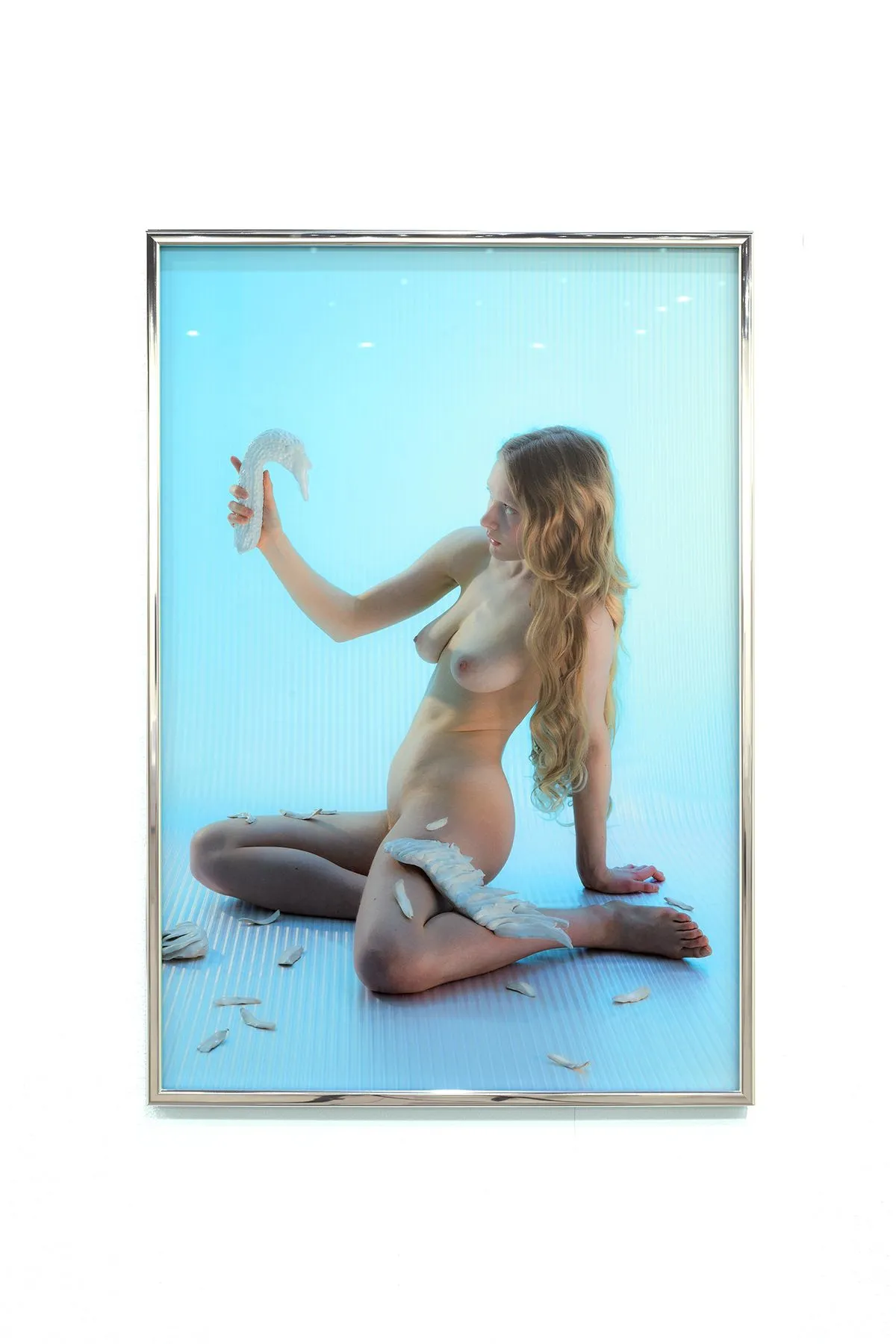

Continuing her exploration of layered identities and historical narratives, Spiaggia Libera presents French artist Marilou Poncin in the Portal section with her solo show Studiolo. Drawing on the legacy of Renaissance studioli—spaces for contemplation and hidden desires—Poncin reimagines them as arenas for reclaiming the gaze and revisiting erotic iconography through a feminist lens. Her photographs and ceramics invert mythological depictions, notably Zeus’ metamorphoses, with female protagonists who assert control by returning the viewer’s gaze. Reworking vintage erotic imagery into ceramics, Poncin transforms passive figures into empowered, goddess-like presences, challenging enduring visual codes and proposing new ways of perceiving the female body.
In a different exploration of desire, Peruvian artist Luis Enrique Zela-Koort and Ecuadorian artist Pablo Andino, in Signs and Spectres at N.A.S.A.L.'s booth in the Emergent section, explore how desire inhabits objects and materials. Zela-Koort's sculptures engage with the release of desire, creating organic forms in industrial materials, while Andino transforms remnants of nightlife into ghostly, ritualistic works. Together, they examine how desire flows through our bodies and objects, pushing boundaries and challenging societal norms.
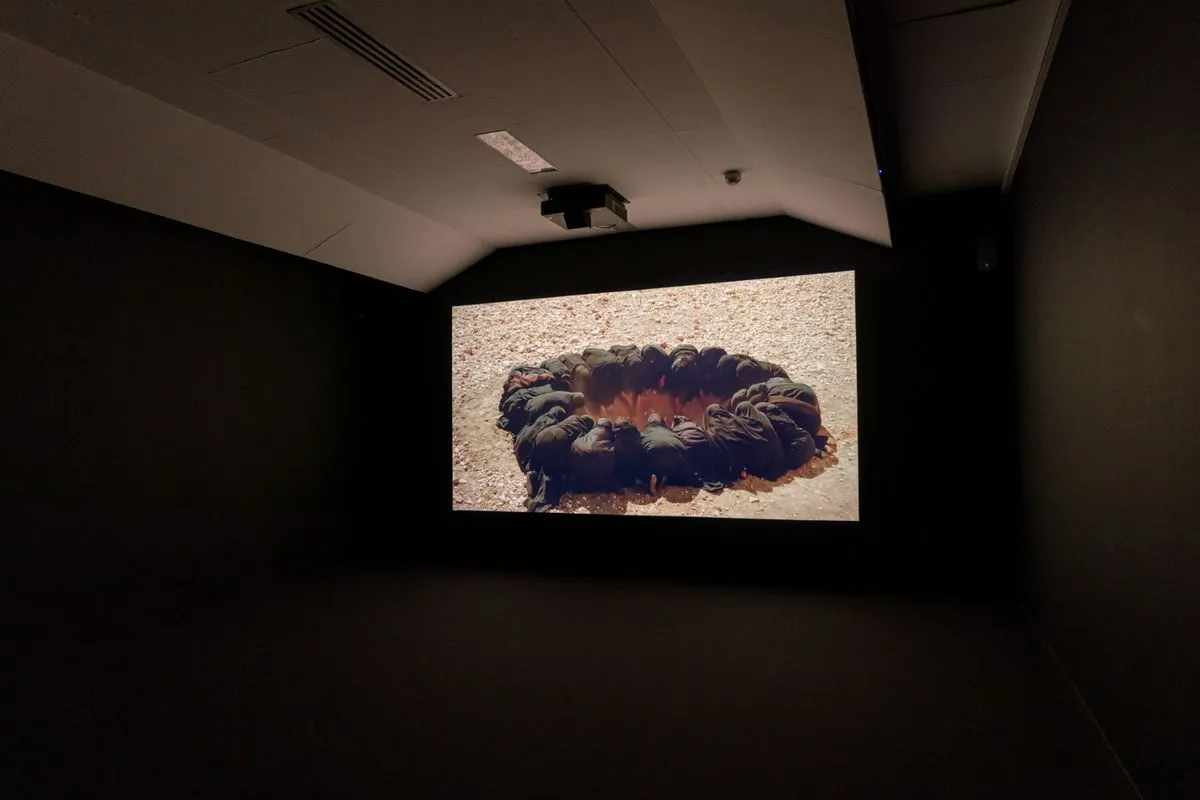
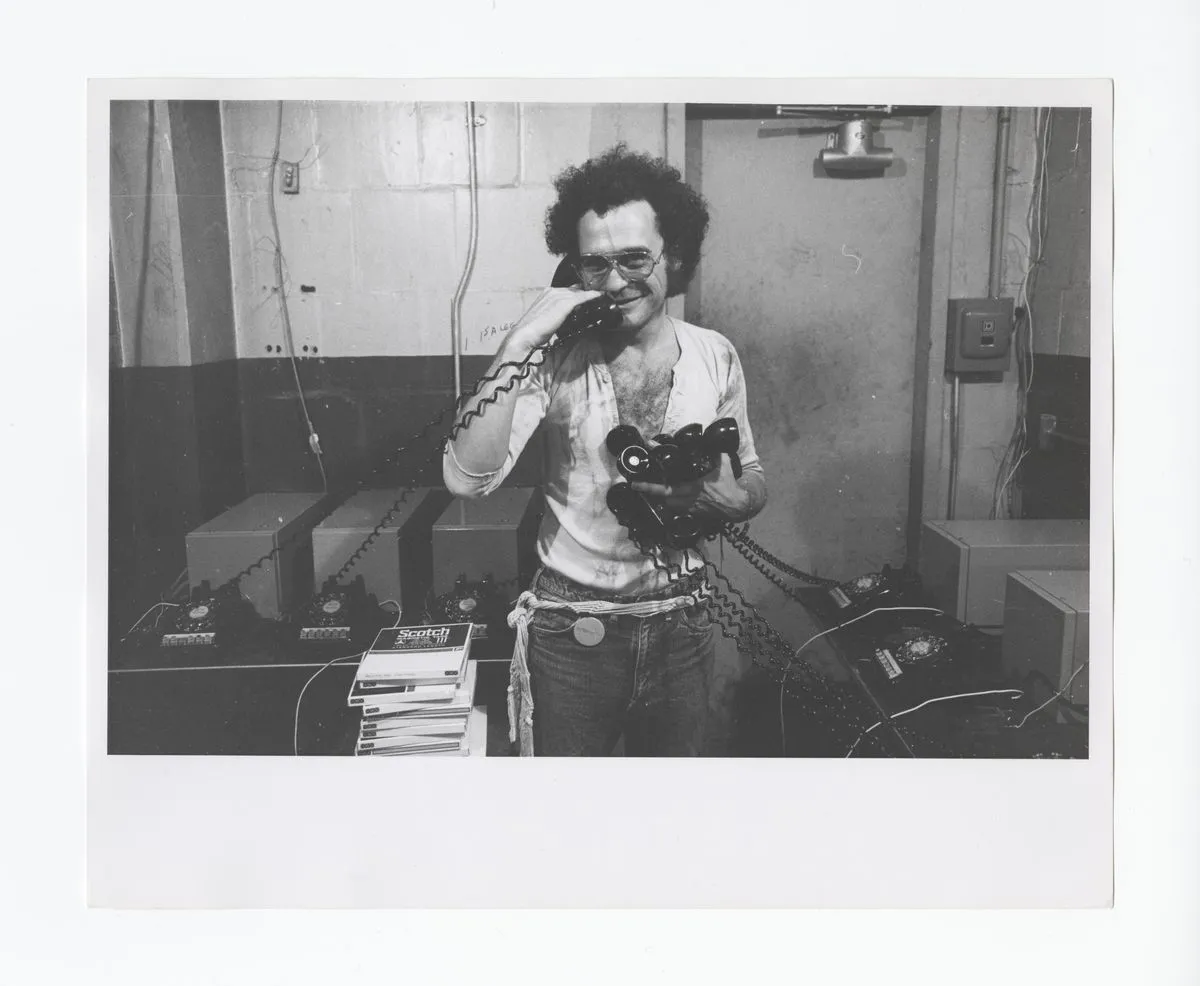
While miart 2025 served as a central hub for artistic exchange, Milan Art Week extends far beyond the fairgrounds, with numerous exhibitions and installations across the city amplifying these conversations. At PAC Padiglione d'Arte Contemporanea, Shirin Neshat's retrospective Body of Evidence explores the intersection of power, gender, and identity through nearly 200 works spanning her 30-year career. At Triennale Milano, A Labour of LOVE, dedicated to poet and artist John Giorno, a key figure in New York's 1960s underground scene, delves into his innovative blending of poetry, visual art, and music, examining his pivotal role in transforming artistic expression through the Giorno Poetry Systems.
Over at Pirelli HangarBicocca, Tarek Atoui's Improvisation in 10 Days transforms the space into a dynamic, evolving sonic environment, offering a participatory exploration of music and its social implications. At the same venue, Yukinori Yanagi's first European retrospective, ICARUS, brings together site-specific installations that explore themes of nationalism, globalization, and the paradoxes of contemporary society. Anselm Kiefer's The Seven Heavenly Palaces, the permanent installation at Pirelli HangarBicocca, continues its haunting meditation on history and the weight of political structures, weaving a cohesive narrative on the complexities of contemporary society.
Miart, the international modern and contemporary art fair organized by Fiera Milano and directed by Nicola Ricciardi, took place from April 4–6, with a VIP preview held on April 3 at Allianz MiCo.